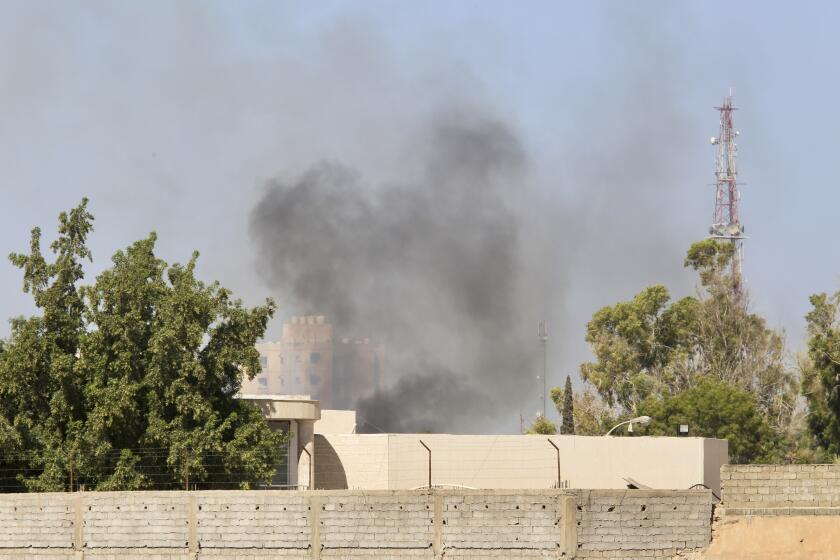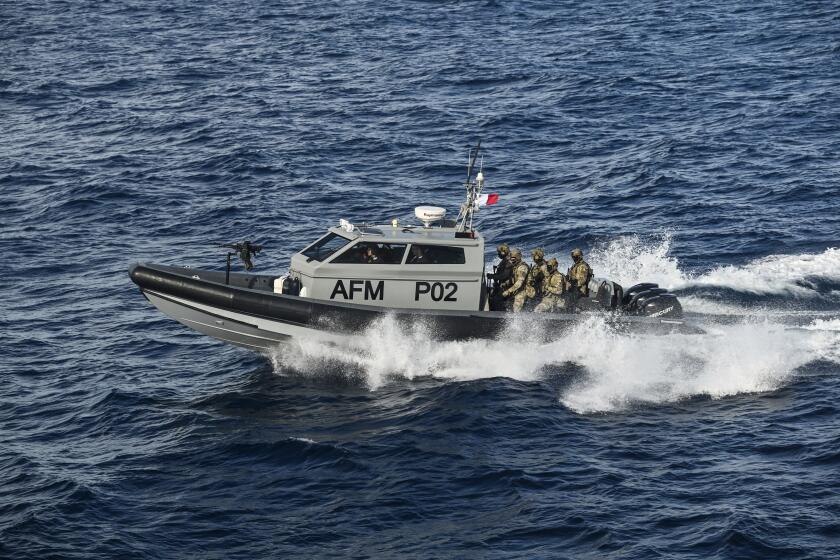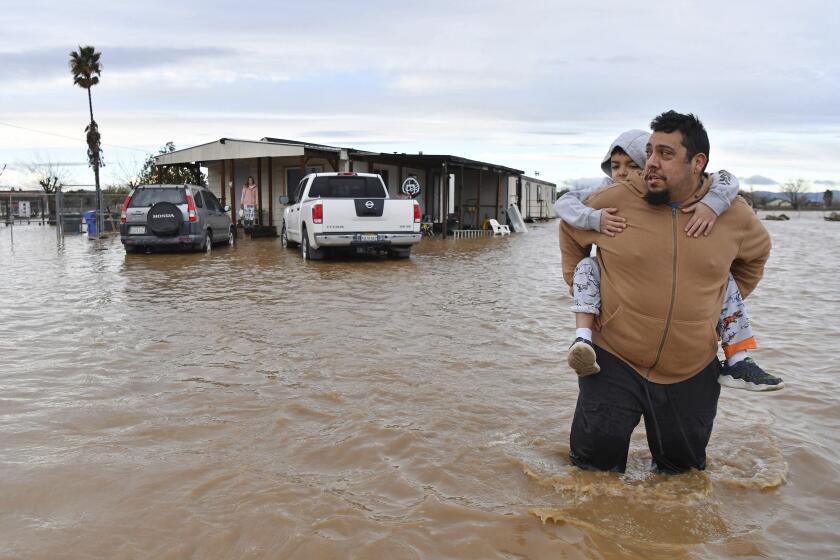More than 5,300 feared dead and 10,000 missing as Libya is devastated by floods
The city of Derna, in eastern Libya, has buried 700 victims of catastrophic flooding, with 10,000 people reported missing.
CAIRO — Emergency workers uncovered more than 1,500 bodies in the wreckage of Libya’s eastern city of Derna on Tuesday, and it was feared the toll could spiral with 10,000 people reported still missing after floodwaters smashed through dams and washed away entire neighborhoods of the city.
The death toll in Derna alone has exceeded 5,300, the state-run news agency quoted Mohammed Abu-Lamousha, a spokesman for the east Libya interior ministry, as saying Tuesday. Derna’s ambulance authority earlier put the toll at 2,300.
The startling death and devastation wreaked by Mediterranean Storm Daniel pointed to the storm’s intensity, but also the vulnerability of a nation torn apart by violence and chaos for more than a decade. The country is divided by rival governments, one in the east, the other in the west, and the result has been neglect of infrastructure in many areas.
Outside help was only just starting to reach Derna on Tuesday, more than 36 hours after the disaster struck. The floods damaged or destroyed many access roads to the coastal city of some 89,000.
Video showed dozens of bodies covered by blankets in the yard of one hospital. Another image showed a mass grave piled with bodies. More than 1,500 corpses were collected, and half of them had been buried as of Tuesday evening, the health minister for eastern Libya said.
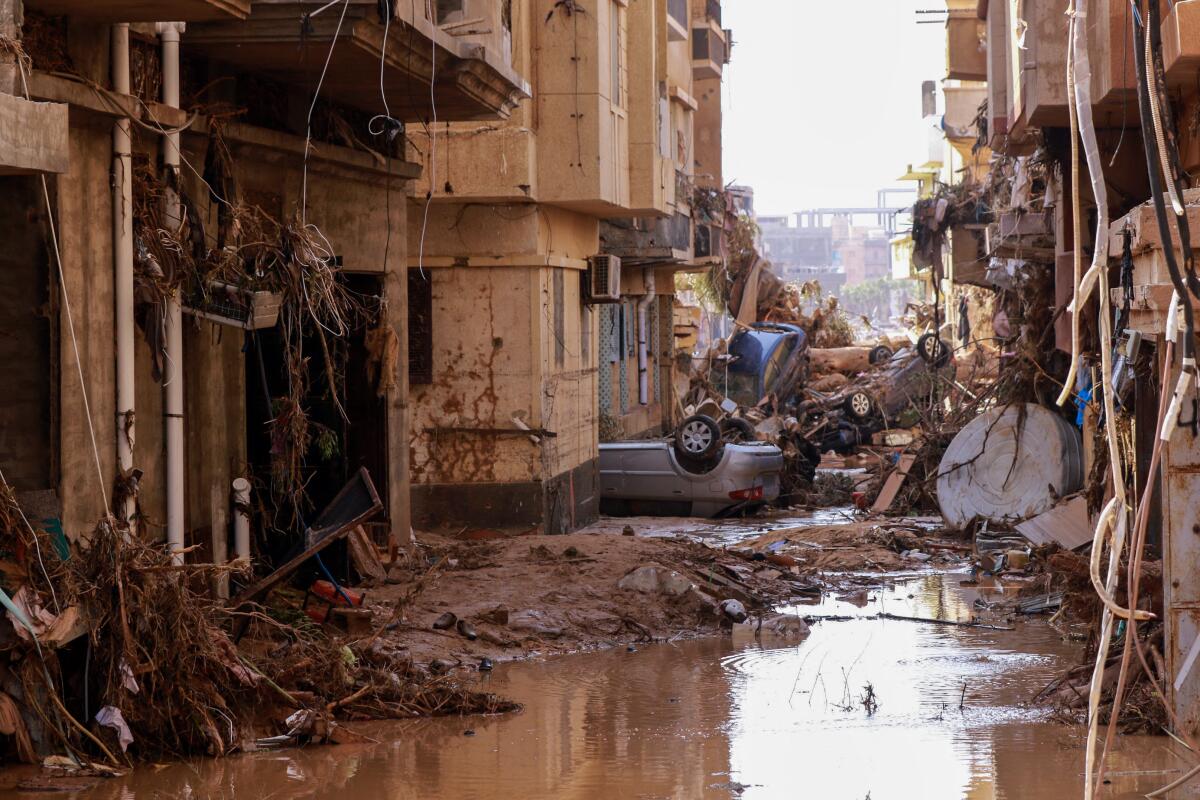
But the toll is likely to be higher, said Tamer Ramadan, Libya envoy for the International Federation of Red Cross and Red Crescent Societies. He told a U.N. briefing in Geneva via videoconference from Tunisia that at least 10,000 people were still missing. He said later Tuesday that more than 40,000 people have been displaced.
The situation in Libya was “as devastating as the situation in Morocco,” Ramadan said, referring to the deadly earthquake that hit near the city of Marrakech on Friday night.
The destruction came to Derna and other parts of eastern Libya on Sunday night, when Daniel pounded the coast. Residents said they heard explosions and realized that dams outside the city had collapsed, unleashing flash floods down Wadi Derna, a river running from the mountains through the city and into the sea.
Moroccan soldiers and aid teams are scrambling to reach remote mountain towns by land and air as the death toll from Friday’s earthquake neared 2,500.
The wall of water sweeping through Derna “erased everything in its way,” resident Ahmed Abdalla said.
Videos posted online by residents showed large swaths of mud and wreckage where the raging waters had swept away the residential neighborhoods on both banks of the river. Multi-story apartment buildings that once were well back from the river had facades ripped off and concrete floors collapsed. Cars lifted by the water were dumped on top of one another.
Local emergency responders, including troops, government workers, volunteers and residents, were digging through debris to recover the dead. They also used inflatable boats to retrieve bodies from the water.
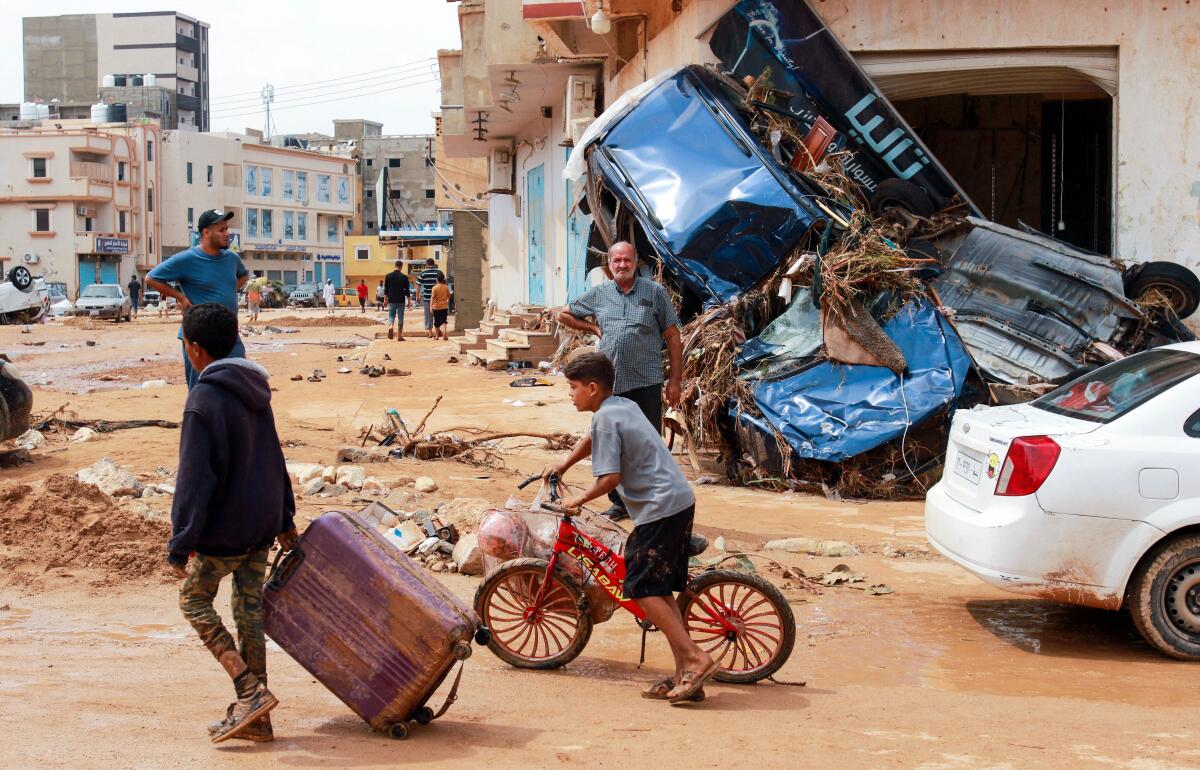
Many bodies were believed trapped under wreckage or had been washed out into the Mediterranean Sea, said eastern Libya’s health minister, Othman Abdul-
jaleel.
“We were stunned by the amount of destruction. ... The tragedy is very significant, and beyond the capacity of Derna and the government,” Abduljaleel told the Associated Press on the phone from Derna.
Red Crescent teams from other parts of Libya also arrived in Derna on Tuesday morning, but extra excavators and other equipment had yet to get there, hampered in part by cut-off and destroyed roads.
Authorities say clashes between rival militias in Tripoli, Libya’s capital, have killed at least 27 people and left residents trapped in their homes.
Flooding is common in Libya during the rainy season, but rarely with this much destruction. A key question was how the rains were able to burst through two dams outside Derna — whether because of poor maintenance or the sheer volume of rain.
Karsten Haustein, a climate scientist and meteorologist at Leipzig University in Germany, said in a statement that Daniel dumped nearly 16 inches of rain on eastern Libya in a short time.
“The infrastructure could probably not cope, leading to the collapse of the dam,” he said, adding that human-induced rises in water surface temperatures probably added to the storm’s intensity.
Local authorities have neglected Derna for years, often discussing developing it but never acting, said Jalel Harchaoui, an associate fellow specializing in Libya at the London-based Royal United Services Institute for Defense and Security Studies.
Rescue groups accuse the European nation of Malta of coordinating the return of migrants to Libya, where they were imprisoned, in a violation of the law.
“Even the maintenance aspect was simply absent. Everything kept being delayed,” he said.
Factionalism also comes into play. Derna was for several years controlled by Islamic militant groups. Military commander Khalifa Haftar, the autocratic leader of the east Libya government, captured the city in 2019 only after months of tough urban fighting.
The eastern government has been suspicious of the city ever since and has sought to sideline its residents from any decision-making, Harchaoui said. “This mistrust might prove calamitous during the upcoming post-disaster period,” he said.
Haftar’s eastern government, based in the city of Benghazi, is locked in a bitter rivalry with the western government in the capital, Tripoli. Each is backed by powerful militias and by foreign powers. Haftar is also backed by Egypt, Russia, Jordan and the United Arab Emirates, and the west Libya administration is backed by Turkey, Qatar and Italy.
Start your day right
Sign up for Essential California for the L.A. Times biggest news, features and recommendations in your inbox six days a week.
You may occasionally receive promotional content from the Los Angeles Times.
Still, the initial reaction to the disaster brought some crossing of the divide.
The government of western Libya sent a plane with health workers and 14 tons of medical supplies to Benghazi. Airplanes carrying humanitarian aid and rescue teams from Egypt, Turkey and the United Arab Emirates also arrived Tuesday in Benghazi.
It was not clear how quickly the aid could be moved to Derna, 150 miles east of Benghazi, given conditions there. Ahmed Amdourd, a Derna municipal official, called for a sea corridor to deliver aid and equipment.
U.S. Special Envoy for Libya Richard Norland said on X, the platform formerly known as Twitter, that the United States is coordinating with the United Nations and local authorities to assess how best to target official U.S. assistance. Tunisia, Algeria, Turkey and the United Arab Emirates also promised help for search-and-rescue efforts.
President Biden said in a statement Tuesday that the United States is sending emergency funds to relief organizations and coordinating with the Libyan authorities and the U.N. to provide additional support.
“Jill and I send our deepest condolences to all the families who have lost loved ones in the devastating floods in Libya,” he said.
The fires in Hawaii and Hurricane Idalia helped push the U.S. to an annual record for the number of weather disasters that cost at least $1 billion.
The storm hit other areas in eastern Libya, including the town of Bayda, where about 50 people were reported dead. The Medical Center of Bayda, the main hospital, was flooded and patients had to be evacuated, according to video shared by the hospital on Facebook.
Other towns that suffered included Susa, Marj and Shahatt, according to the government. Hundreds of families were displaced and took shelter in schools and other government buildings in Benghazi and elsewhere in eastern Libya.
Northeast Libya is one of the country’s most fertile and green regions. The Jabal al-Akhdar area — where Bayda, Marj and Shahatt are located — has one of the country’s highest average annual rainfalls, according to the World Bank.
More to Read
Sign up for Essential California
The most important California stories and recommendations in your inbox every morning.
You may occasionally receive promotional content from the Los Angeles Times.


